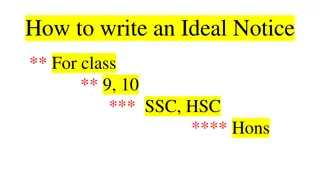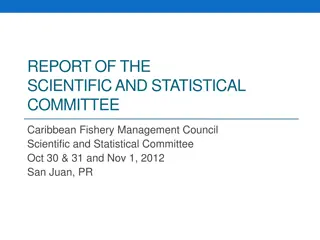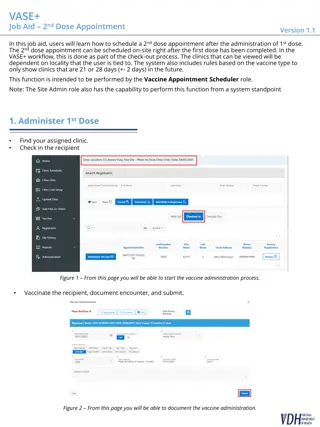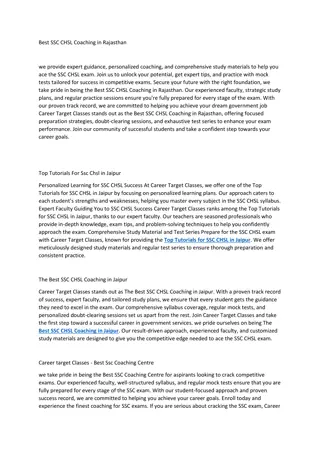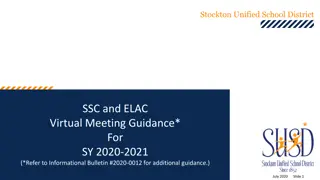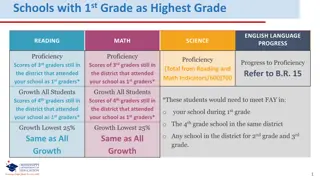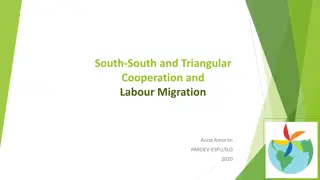
Understanding Irrigation Water Quality Criteria and Standards
Explore the importance of evaluating irrigation water quality, guidelines for assessing various parameters, and formulas for determining water suitability, with a focus on sodium, calcium, and magnesium content in a sample water source.
Download Presentation

Please find below an Image/Link to download the presentation.
The content on the website is provided AS IS for your information and personal use only. It may not be sold, licensed, or shared on other websites without obtaining consent from the author. If you encounter any issues during the download, it is possible that the publisher has removed the file from their server.
You are allowed to download the files provided on this website for personal or commercial use, subject to the condition that they are used lawfully. All files are the property of their respective owners.
The content on the website is provided AS IS for your information and personal use only. It may not be sold, licensed, or shared on other websites without obtaining consent from the author.
E N D
Presentation Transcript
SSC-221 TOPIC : IRRIGATION WATER QUALITY AND STANDARDS Dr.Amitava Rakshit E-Mail: amitavar@bhu.ac.in Twitter: @AmitavaRakshit3 LinkedIn: linkedin.com/in/dr-amitava-rakshit- 77799ab
Crops receive moisture for their growth and development mainly from Surface water Irrigation water + Rain water Ground water IRRIGATED AREA : Total crop area (m.ha) Total crop area actually irrigated (m.ha) 58.13 Crop area under ground water irrigation (m.ha) 39.43 Crop area under canal irrigation (m.ha) 22.48 India 159.6 Uttar Pradesh 17.6 14.49 10.64 4.21 1/3rd of the cultivated area is under irrigation. In that 65 % is through ground water
POTENTIAL : Surface water resources : 1869 km3 Catchment area of rivers : 252.8 m.ha Ground water available : 360 km3 Ultimateirrigation potential of the country : 139.5 mha
Criteria for evaluation of irrigation water Colour, odour, viscosity Physical properties Water temperature, density Salinity Sodium Salt index Chemical properties RSC, SSP, SAR, TDS B, Cl-1, Mg, NO3-, Li, F Heavy metals (As, Cd, Ni, Pb) OP, DO, COD, BOD
Algae Escherichia coli Biological properties Phytoplankton Water class Salinity EC (mSm-1) SAR RSC (me L-1) B (ppm) Cl-1 SSP (me L-1) Low 0 25 0 10 < 1.25 < 0.33 4 15 Medium 25 75 10 18 1.25 2.5 0.67 4 7 15 30 High 75 225 18 26 > 2.5 1.00 1.25 7 12 30 60 Very high 225 - 500 > 26 > 2.5 > 1.25 12 - 20 > 60
Guidelines for irrigation water quality (FAO) Component Intensity of problem Moderate 0.75 3.0 6 - 9 8 - 16 16 - 24 4 - 10 0.75 2.0 5 - 30 1.5 8.5 - No Severe > 3.0 > 9 > 16 > 24 > 10 > 2.0 > 30 > 8.5 0 5, 9.5 EC (dSm-1) < 0.75 < 6 < 8 < 16 < 4 < 0.75 < 5 < 1.5 6.5 8.5 Adj SAR (Montmorillonite domination) Adj SAR (Illite - Vermiculite) Adj SAR (Kaolinite - Sesquioxide) Cl (me L-1) B (me L-1) NO3- - N (me L-1) HCO3- (me L-1) pH
FORMULAE Na+ SAR = Ca+2 + Mg+2 2 Adj SAR = SAR [ 1 + 8.4 pHe] RSC = ( CO32- + HCO3-) ( Ca2+ + Mg2+) TDS = 640 * EC (dSm-1) OP = 0.36 * EC (dSm-1) TSC = 10 * EC (dSm-1)
Numerical related to irrigation water quality : Q. An irrigation water contains 207, 60 and 24 mg L-1 of sodium (Na+), calcium (Ca+2) and magnesium (Mg+2) respectively. Calculate total cation concentration in me L-1, SAR, EC, TDS and OP of irrigation water and predict its suitability
Sol. 207 mg L-1 Na+ =207/23 = 9 me L-1 60 mg L-1 Ca2+ =60/20 = 3 me L-1 24 mg L-1 Mg2+ =24/12 = 2 me L-1 Na+ 9 SAR = = = 9/ 2.5 = 5.69 Ca+2 + Mg+2 2 3+2 2 Total cation concentration = (9+3+2) me L-1 = 14 me L-1 EC = 14/10 = 1.4 dSm-1 OP = 1.4 * 0.36 = 0.504 TDS = 640 * 1.4 = 896 mg L-1
Further readings Soil and Water Quality-an agenda for Agriculture-National regional Council Water quality for agriculture-FAO Publication Irrigation Water Quality (https://doi.org/10.1007/978-3-319-96190- 3_5)






